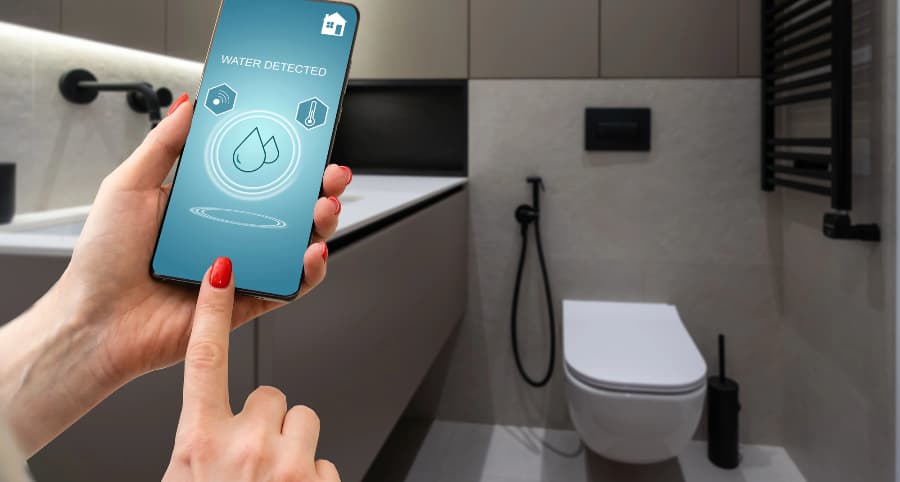How does a water sensor work and why use one with your Palm Springs smart home?

One tiny leak in your home can result in major issues and thousands of dollars worth of damage. You have to safeguard against this danger; fortunately, there’s a simple way to achieve this. A water sensor is an economical, simple, and effective solution. Learn how they work and why you ought to connect water sensors to your Palm Springs smart home.
How water sensors protect Palm Springs properties
Water enters homes in various ways, whether from an appliance breakdown, plumbing issue, weather-related incident, or simple human error. However it occurs, you have to know right away, and this is how water sensors help. But how exactly do they work?
The majority of water sensors are conductive and operate with a pair of electrodes. When water enters the area between the electrodes, an electrical connection is created, triggering your alarm. You’ll also find capacitive sensors that release an electrical field. Your alarm triggers when water touches the conductive areas of these devices and disrupts the field. Optical sensors using infrared LED light are an additional choice.
Get more protection from water sensors
Certain innovative water sensors give you even more protection as they have built-in temperature sensors. This is an exceptional tool in preventing frozen pipes. If there’s a severe drop in temperature, you’ll find out immediately. Taking steps before pipes burst will protect you from flooding and exorbitant repair costs.
Why incorporate water sensors into your Palm Springs smart home?
When water issues happen, you need to be alerted immediately. You can attain this aim by integrating water sensors into your smart home. Whether you’re home to hear the alarm or somewhere else, you’ll be sent an immediate alert on your smartphone. As an additional backup, your 24/7 monitoring agents will be informed. Every moment counts in a water emergency to limit the destruction and disruption to your life.
Where should you place water sensors?
Any area prone to water infiltration is an ideal position for water sensors. Consider installing in these areas:
- Bathrooms: Attach at the back of toilets or next to bathtubs.
- Basements: Water often enters lower levels through leaky walls or because of heavy rain or faulty sump pumps.
- Near water heaters or appliances: Any water-utilizing appliance may over time leak.
- Below sinks: Water sensors are ideal for detecting pipe leaks in areas you can’t see.
- Attics: Detect roof leaks quickly and avert costly damage.
Get water sensors with your Vivint smart home
Give your property the complete protection it requires with modern tools from Vivint. Our water sensors in Palm Springs link to your Vivint mobile app to deliver automatic updates any time your alarm is triggered. You also get incorporated temperature sensors to avoid frozen pipes. Learn more about the smart home components available in Palm Springs by reaching out to (760) 334-5668 today.
